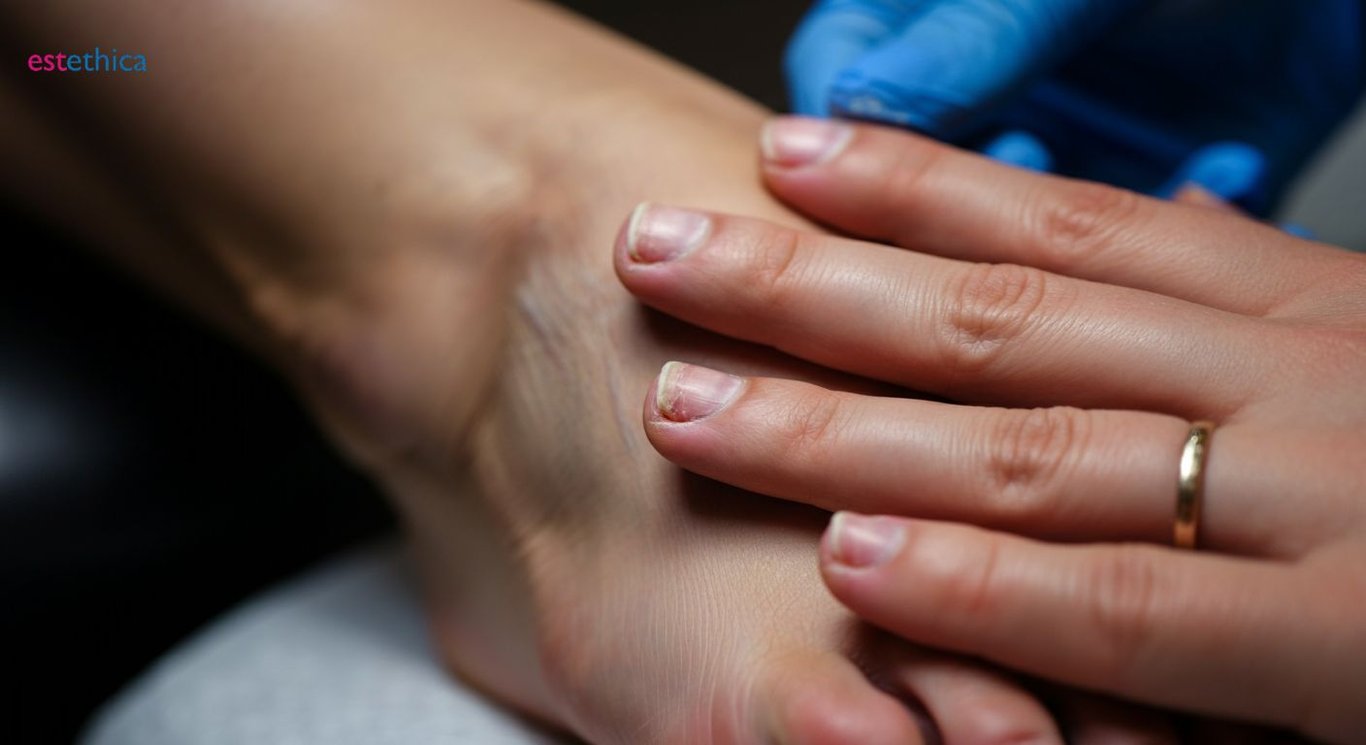Mastering Nail Fungus: Proven Treatments and Essential Prevention Tips
Discover essential tips for mastering nail fungus prevention and treatment.
Mastering Nail Fungus: Proven Treatments and Essential Prevention Tips
Nail fungus is a common, yet often overlooked condition that can affect the health and appearance of your nails. Understanding how to identify, treat, and prevent nail fungus is crucial for maintaining healthy nails year-round. In this guide, we will explore effective home remedies, symptoms, and essential prevention tips to keep your nails fungus-free.
Understanding Nail Fungus: What You Need to Know
Common Causes and Prevention of Nail Fungus
Nail fungus thrives in environments that are warm and moist, making public swimming pools, showers, and locker rooms common places for infection. Individuals with a history of athlete's foot or those with a weakened immune system are more susceptible. Wearing tight-fitting shoes or using nail polish can also increase the risk.
Preventive Measures to Avoid Nail Fungus
- Keep nails trimmed and clean to reduce the chance of infection.
- Wear breathable footwear to prevent moisture buildup.
- Use antifungal sprays or powders in shoes and on feet.
By adopting these preventive measures, you can significantly reduce the risk of developing nail fungus. Regularly changing socks and avoiding walking barefoot in communal areas are also effective strategies.
Steps to Identify Nail Fungus Early
- Inspect nails regularly for any discoloration or changes in texture.
- Note any unusual odors or thickening of the nail.
- Consult a healthcare professional if symptoms persist or worsen.
Early detection is crucial for effective treatment. By being vigilant and proactive, you can manage nail fungus before it leads to more severe complications.

Identifying Symptoms: How to Spot Nail Fungus Early
Recognizing the Early Signs of Nail Fungus
Spotting nail fungus early can prevent more severe complications. Initially, you might notice a small white or yellow spot under the nail tip. This subtle change often goes unnoticed, but it's a crucial early indicator. As the infection progresses, the nail may become discolored, thickened, and start to crumble at the edges.
Common Symptoms of Nail Fungus
- Discoloration ranging from white to yellow or brown.
- Thickening of the nail, making it difficult to trim.
- Crumbly or ragged edges, leading to nail distortion.
These symptoms can vary in intensity, but recognizing them early can lead to more effective treatment options.
Steps to Monitor Nail Health
- Regularly examine your nails for any changes in color or texture.
- Pay attention to any unusual odors emanating from the nails.
- Seek medical advice if symptoms persist or worsen over time.
By maintaining a routine check of your nails, you can catch potential infections early and seek appropriate treatment, reducing the risk of spreading the fungus to other nails or parts of the body.

Effective Home Remedies for Nail Fungus Treatment
Natural Ingredients with Antifungal Properties
Home remedies for nail fungus often utilize natural ingredients known for their antifungal properties. Tea tree oil, for instance, is a popular choice due to its ability to penetrate the nail and combat fungal infections. Similarly, apple cider vinegar is believed to create an acidic environment that hinders fungal growth. Consistent use of these remedies can gradually reduce the severity of the infection.
Common Home Remedies for Nail Fungus
- Tea tree oil: Apply directly to the affected nail twice daily.
- Apple cider vinegar: Soak the nails in a mixture of vinegar and water.
- Baking soda: Create a paste and apply to the infected area.
These remedies are most effective in the early stages of infection. For more persistent cases, consulting a healthcare professional for antifungal medication might be necessary.
Steps to Apply Home Remedies Effectively
- Clean the affected area thoroughly before application.
- Apply the chosen remedy consistently, following recommended guidelines.
- Monitor progress and adjust treatment as needed.
By following these steps, you can maximize the effectiveness of home remedies and potentially avoid the need for more intensive treatments.

Preventing Nail Fungus: Tips for Healthy Nails Year-Round
Essential Habits for Nail Fungus Prevention
Maintaining healthy nails involves adopting daily habits that minimize the risk of fungal infections. Regularly washing and drying your feet thoroughly can prevent moisture buildup, which is a breeding ground for nail fungus. Additionally, wearing socks made from natural fibers like cotton can help absorb sweat and keep feet dry.
Key Practices for Healthy Nails
- Choose breathable shoes to allow air circulation and reduce moisture.
- Trim nails straight across and avoid cutting them too short.
- Disinfect nail tools regularly to prevent cross-contamination.
These practices not only help in preventing nail fungus but also promote overall nail health, reducing the likelihood of other nail-related issues.
Steps to Protect Nails in Communal Areas
- Wear flip-flops or shower shoes in public showers and pools.
- Apply antifungal powder to feet before putting on socks and shoes.
- Regularly wash and change socks to maintain foot hygiene.
By following these steps, you can significantly lower the risk of contracting nail fungus, especially in environments where the fungus is more likely to thrive.
Advanced Home Remedies for Nail Fungus Treatment
Effective Prevention Strategies for Year-Round Nail Health
Frequently Asked Questions
What are the common symptoms of nail fungus?
How can I treat nail fungus at home?
What preventive measures can I take to avoid nail fungus?
Why is early detection of nail fungus important?
What are the risks of untreated nail fungus?
Discover the path to 'Healthy Beauty' with estethica's expert team. Call now for your free consultation and take the first step towards a more confident you!
📞 Call for Your Free Consultation